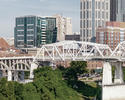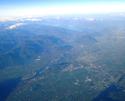In a March 26 article, The New York Times headlined: "Even before coronavirus, America's population was growing at slowest rate since 1919." Experts suggested that, with the coronavirus and falling immigration rates, the country could see a population decline next year.
Lurking behind this overall assessment was even bigger news for Californians. Improbably, the much smaller Stockton, Fresno and Bakersfield metropolitan areas are now growing faster than the San Francisco and Los Angeles metropolitan areas, as well as the San Diego metropolitan area. read more »






















